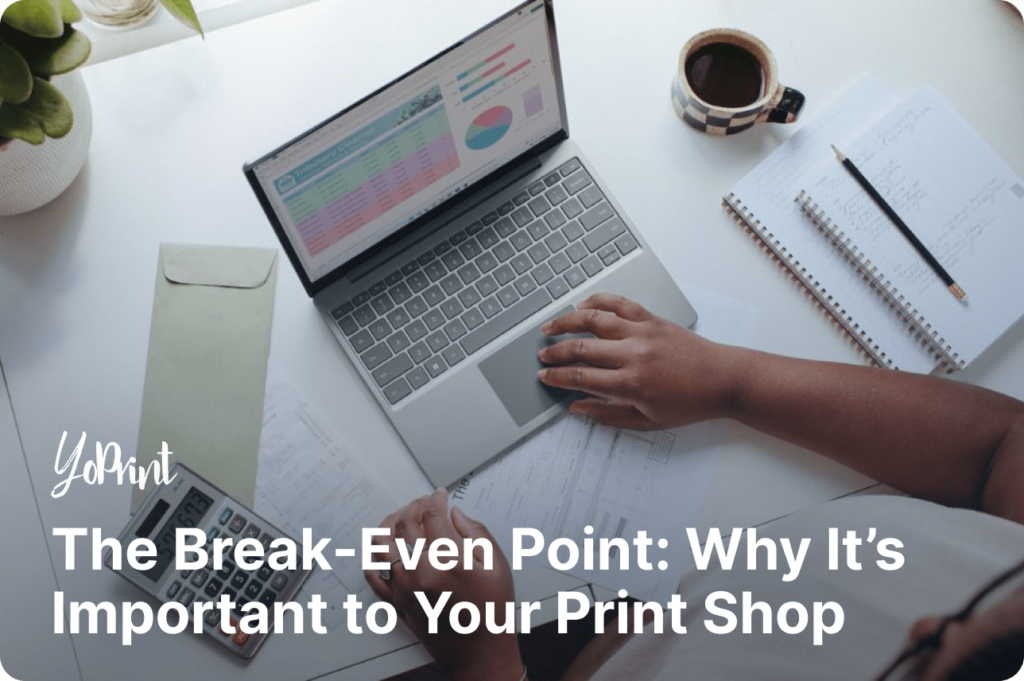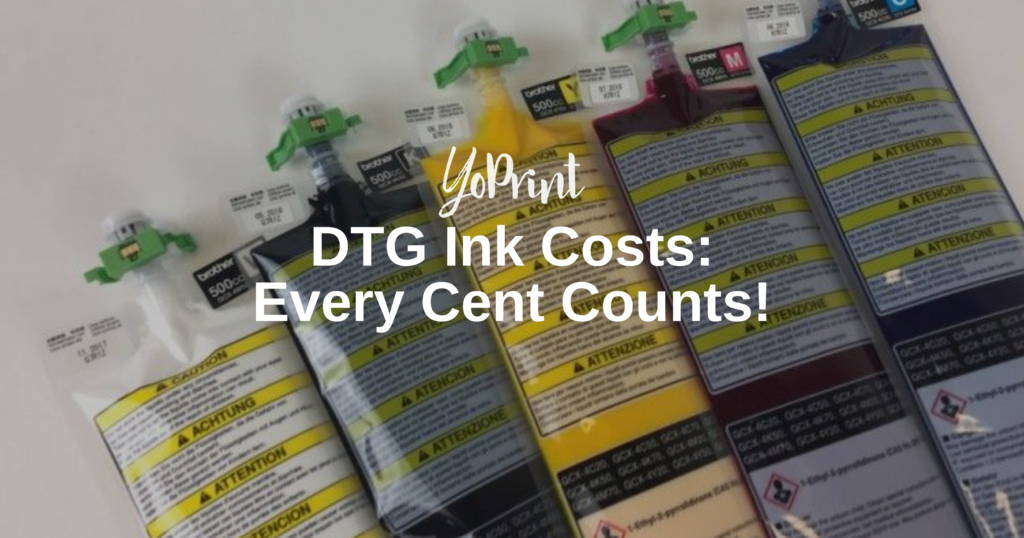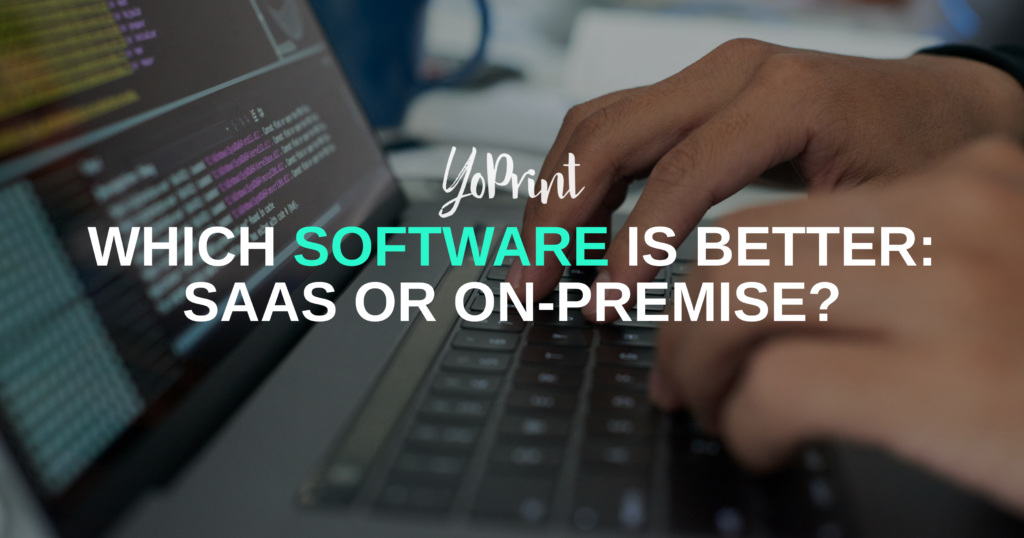If you’re planning to start a print shop of your own, you may (or might not) have been asked about your break-even point. If you’re still new to starting a business, it might not be something you’re familiar with. All you know is that you’ve got the capital to start, know what you need to get printing and understand your target audience. The next step is to start making money once the shop opens for business – right?
What is the Break-even Point?

Simply put, the break-even point is where your total sales equal your overall expenses, a point where there is no profit or loss. In the context of your print shop, you’ll need to adjust your preparation, printing, and shipping costs so that the revenue generated from every sale eventually surpasses the break-even point. If it does, then you’re considered as operating at a profit; otherwise, you’re operating at a loss.
To find the break-even point for your shop, apply the following formula:
Break-even point = fixed costs / (sales price per unit – variable costs per unit)
Determining the break-even point relies on two critical factors: fixed and variable costs.
Fixed costs don’t change no matter how much you sell. This usually refers to your shop’s rent, insurance coverage, subscriptions for business-related software, staff wages, etc. Even if they do change, like if you switched to another insurance provider, these costs are an operational constant, even if the amount varies.
Variable costs are expenses needed for your products and services and change based on your sales. It’s related to purchasing equipment, printing supplies, blanks, etc. The more you sell, the more you’ll need to spend to restock.
There are still caveats to identifying your fixed and variable costs; we’ll get to those soon enough.
Finding Your Break-even Point
Let’s use a simple break-even analysis example to show you how to apply the given formulae to your shop.
Suppose your fixed costs – which include rental, staff salaries, utilities, and point-of-sale (POS) software – come to a total of $3,000. Your variable cost to make one unit of custom garments – including the cost of blanks, printing materials, and so forth – is $7. You plan to sell these custom garments at a retail price of $12 per unit.
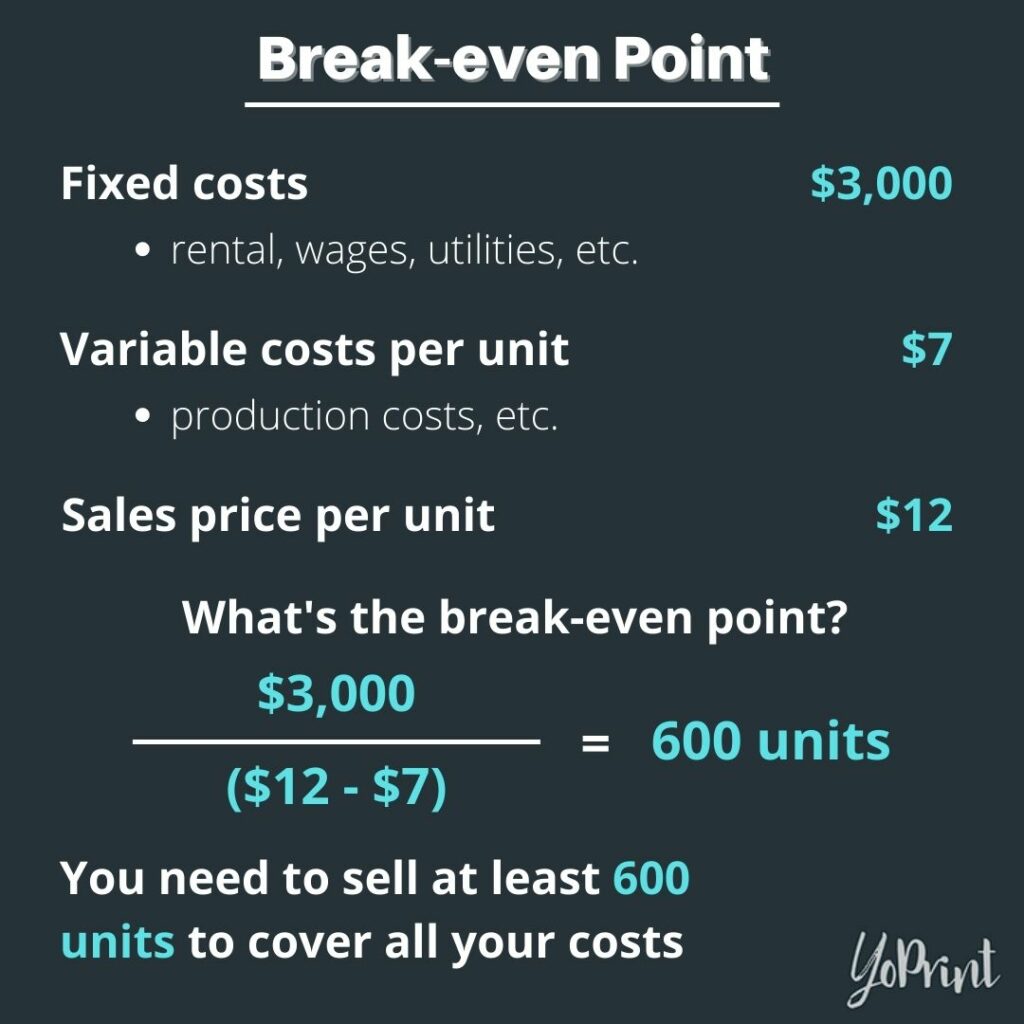
You’ll thus need to sell 600 custom garments (or $7,200) to break even. Selling more than that amount means you’ll be earning a profit. Thus, from that example, if you sold 1,000 units that month, you’ve made a profit from the additional 400 units sold (or $4,800).
Note that an increase in your fixed costs will ultimately raise your break-even point since you need to sell more to cover all your expenses. Conversely, decreasing fixed costs will lower your break-even point since you won’t need to sell as much.
Why is it Important?

Going into any business requires a lot of meticulous planning: finances, capital, equipment, shop location – that and more are vital to ensuring your shop can get going. Then there’s also the need to know how well your products and services can sell. You must figure out the optimal pricing structure, considering your overall expenses and how to profit from all your sales. To find the answer to that, a break-even analysis is what you need to figure out how to get a return on investment in time.
What makes it so important, though?
Pricing for profit: With competition from other print shops, it can be easy to price your goods and services at a low rate to stay ahead of the competition. This can easily present many financial issues: the lower your prices, the more you’ll need to spend to stay afloat. Your overheads and production costs aren’t getting any lower, after all.
With a break-even analysis, you’ll know your sales target for your products and services and how much you need to profit. You’ll know if it’s not worth undercutting your competitors’ prices just to gain a temporary advantage.
Organize your finances: A break-even analysis requires you to know all the fixed and variable costs required to keep your shop running. This means you’ll need to keep track of every aspect of your shop’s expenses to paint a complete picture.
At the very least, keeping your finances on track will be easy. For example, if you know how much you need to sell to profit, how do you plan to make that profit? How do you manage your overall costs without operating at a loss? Making logical decisions where your finances are concerned can do a lot to keep the business running at a profit.
Set realistic goals: Lofty, exciting ideas don’t always work out how you hope they would. Setting a high sales target can pose a significant risk to your shop without a proper business plan implemented. A break-even analysis gives you a clear idea of the available resources and what you can do with them to maximize your profit margins realistically.

For example, if you already know you need to sell at least 600 units to break even, you’ll be able to plan a suitable sales strategy and an achievable sales target. You can then use this to help you set new goals and strategies as your shop slowly expands.
Limitations to Break-even Analysis
While knowing your break-even does provide various benefits to running your shop optimally, it isn’t a “be all, end all” solution to keep your finances green. You shouldn’t solely rely on the break-even analysis to help you stay afloat (more on that in the subsequent section of this article).
Requires accurate data: You can’t simply plug in whatever data you have to perform a break-even analysis. Correct data is needed to ensure that you get precise information on whether to pursue a business plan (a new product or service, for example) or otherwise.
It can be confusing enough to categorize your fixed and variable costs. For example, how would you categorize maintenance cycles your equipment needs, whether scheduled or otherwise? If you don’t carefully sift through your figures and work on a specific dataset to use, you might muddle the analysis and lead to an unreliable result.
Not a forecasting tool: The break-even analysis helps determine your sales targets, but that doesn’t necessarily translate to immediate success; it can’t predict what comes next. Even if a business plan has a feasible target to pass the break-even point, you still need to invest in marketing and promotions to draw customer interest in your product or service.
Taking the earlier example, you know you’ll need to sell at least 600 units to break even. Even if you sell 1,000 units and make a profit of $4,800, how will you be able to make good use of the profits earned for the next month? And the month after that? The break-even analysis doesn’t tell you these things.
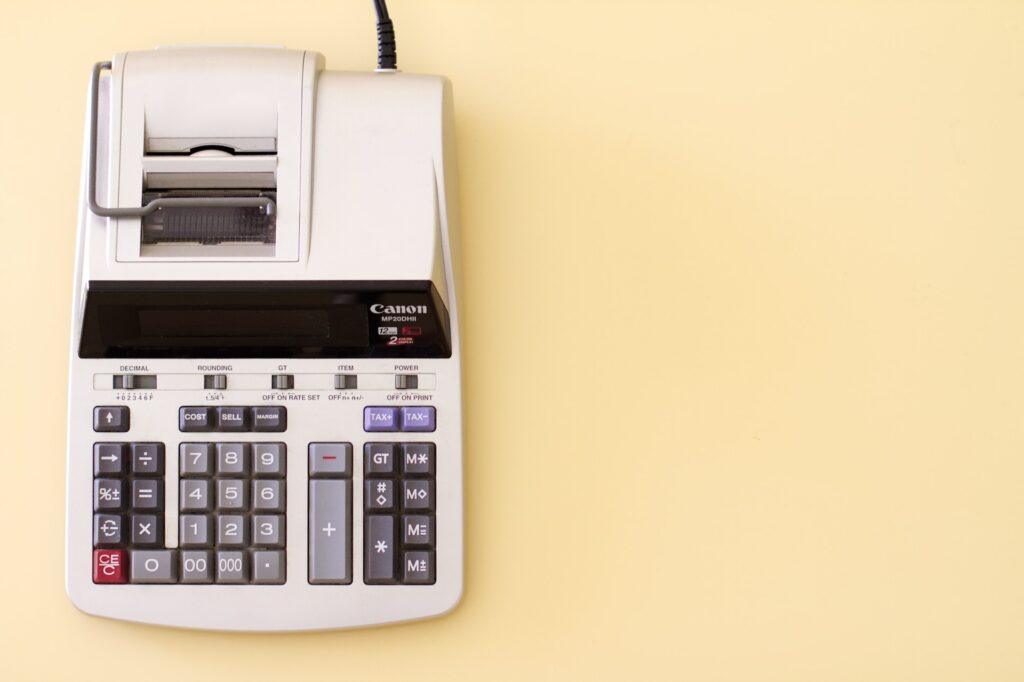
Missing other critical data: There are other indicators that the break-even analysis doesn’t account for besides demand, including time and competition. Many things can quickly change without realizing it: your competitors might introduce a new, competitive pricing scheme, or your usual supplier might run out of your regular blanks. None of these will factor into your plans if you don’t account for them in the first place.
In fact, there’s plenty more that the break-even analysis doesn’t account for: the printing method you’ve chosen, your equipment investment, whether you’re doing it in-house or outsourcing, and so forth. These elements are crucial to ensuring your shop’s long-term success.
The break-even analysis is a simple tool to help you ascertain your profitability. Beyond that, you still need to put in the effort to make good use of what it presents. You can’t solely rely on it to manage every facet of your business and expect excellent results.
Breaking Even and Cash Flow Management
This is where cash flow management plays a critical role in keeping your print shop genuinely profitable. We’ve covered cash flow management in a recent article, but essentially, it involves managing the movement of money, whether cash or non-cash, in and out of your business. A business is bound to fail without adequate cash flow management to track and supervise the overall gains and expenditures of the shop.
Whether or not you’re setting up a new shop or branch, a break-even analysis can define the break-even point of a planned product or service. It serves as your foundation for drawing up a comprehensive business plan and figuring out how to make it work. As such, you’ll be able to apply cash flow management techniques to do the following:
- Get accurate data for your fixed and variable costs.
- Minimize costly or pointless expenditures.
- Keep track of all payments and receivables.
- Constantly update your data based on current trends, peak seasons, etc.
- Make forecasts for potential shortfalls and have a contingency plan.
Let’s dive in with our 600-unit break-even point from earlier. Assuming ideal conditions, you’ll need to sell at least 600 units monthly to break even.
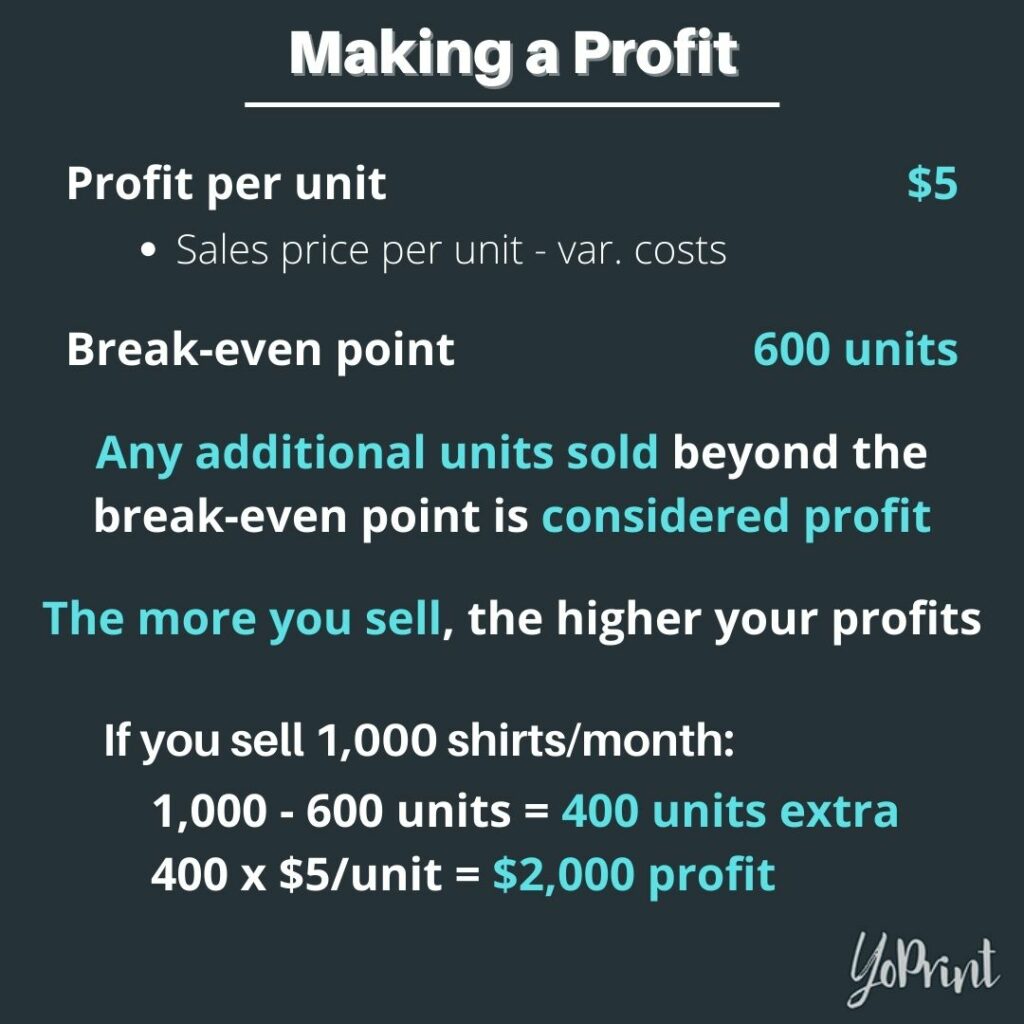
As you can see, whatever amount you sell beyond the break-even point translates into profits. The higher you can sell, the better. With the profits you’ve earned, you can use them for your shop’s future plans: saving it up to widen your products and services or expanding your business to new locations.
While the goal is to maximize profits and minimize costs, it’s a delicate balancing act that you’ll quickly need to familiarize yourself with. Hike your prices too much, and your customers might look elsewhere; lower them significantly, and you might end up operating at a loss. Then there are occasions when you have to find alternatives to your regular materials as your supplier doesn’t have them in stock.
With proper cash flow management implemented, you’ll be able to predict a shortfall before it happens or have contingencies to prepare for unexpected situations. You could have alternate suppliers with what you need when there’s a shortage. You’ll be able to price your products and services accordingly based on past sales and trends. These are just a few ways to help your shop stay ahead of its cash inflows and outflows.
The break-even analysis doesn’t provide the tools you need to prepare for such worst-case scenarios. Again, it’s only an indicator of what you need to start making a profit, but passing the break-even point and running at a profit isn’t the core of a business. Without good cash flow, it would all be for nothing.
Conclusion
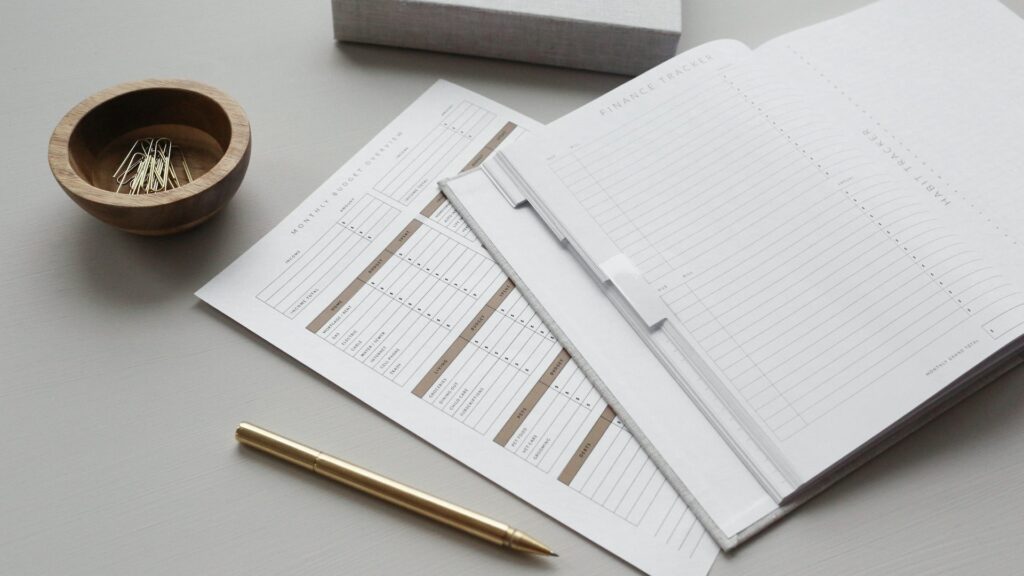
The break-even concept is a fundamental part of any new business starting up or for existing businesses to consider a new product, service, or revenue stream. With it, you’ll be able to know how much you need to sell to break even and start profiting from the extra sales. But the break-even analysis alone isn’t sufficient to keep a business running and profiting. It’s important to put effective cash flow management practices in place to maximize your gains and help your shop stay on top of all its financial commitments.
